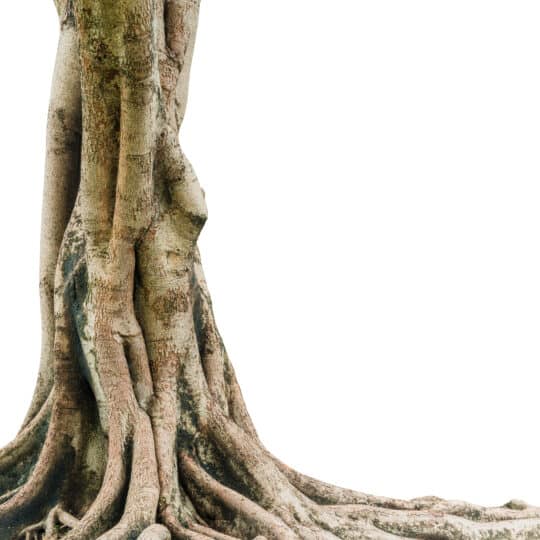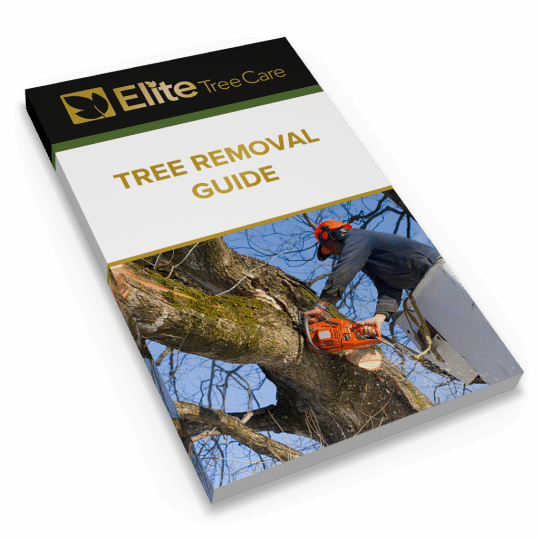Removing Tree Roots
Why and How it’s Done
Posted
September 5, 2024

All plants rely on their roots for support and nourishment. However, when plants are removed from the area, these hidden infrastructures are often overlooked and can continue to grow long after the plant is gone. This can lead to unfavorable results, which is why you should also remove tree roots as part of the tree removal process.
Getting to the Root of the Problem
Whether you’re dealing with weeds, invasive plants, or hazardous trees, removing the plant above the surface is only getting rid of part of the problem. Leaving the roots underground means there’s a chance the plant will grow back. In fact, once the plant is removed, the roots will go into survival mode and work extra hard to regrow the plant. This means you could be dealing with tree seedlings across your lawn, running along the root line. This is also why it’s important to remove the entire plant, including the root, if you don’t want to deal with the same problems in the future.
Problematic Tree Roots
While some weeds and invasive plants are easier to pull the roots out, a tree’s root system is more complicated. Typically, the roots stretch as far as the canopy. Sometimes you can see the intricate system of tangled roots above the surface. Of course, this leads to multiple problems:
- Disrupts the look of your landscape
- Prevents growth of surrounding plants
- Tripping hazard on driveways and walkways
- Cracks pavement
And then there are the problems you can’t see, until it’s too late:
- Blocks sewer lines
- Breaks underground pipes
- Structural damage to building foundation
Many of these problems can result in costly repairs. This is why it’s important to properly plant a tree to prevent the issues from happening in the first place. If they do occur, it’s best to remove the tree and its entire root system to help prevent further damage.
How to Remove Tree Roots
Whether it’s the tree or the roots causing issues, it’s best to evaluate the entire situation before starting the tree removal process. Have an arborist assess the safest, most efficient way to remove the tree and roots in order to prevent additional damage to structures and/or utility lines. Here are a few root removal methods to choose from:
- Manual. Small plants with a less intrusive root system are easier to dig up with a shovel. Make sure the hole is wide enough to fully extract the entire root.
- Grinding. Use a stump grinder to break apart larger roots into wood chips.
- Chemical. For roots near pipes or hard-to-reach areas, there are specially formulated chemicals that work to dissolve roots over time. However, this method can have adverse effects on the surrounding soil and plants.
- Hydrojetting. High-pressure water jets can be used by professional plumbers to clear root and debris blockages in sewer lines.
Even if the root system seems small and simple to remove, it’s beneficial to have a certified arborist assess the situation to help ensure the job is done safely and efficiently so the roots don’t grow back. A pro will also have the tools necessary to handle more complicated root removal and the know-how and insurance to limit costly repairs.
Preventing Root Problems
Whether you’ve removed roots and don’t want them to grow back or want to prevent problems altogether, keep these tips in mind before, during, and after planting something in your yard:
- Install physical root barriers to help prevent roots from encroaching on protected areas.
- Regularly inspect your property for potential root problems—including visible roots or new seedlings—and address them early.
- Carefully plan where you plant new trees and shrubs, considering the size of their root systems and how it can potentially impact nearby structures, utility lines, and other plants.
Even though roots are seldom seen, they are an essential part of healthy, safe, and aesthetically pleasing plant growth. Keep this in mind before you plant to help prevent issues. But if root problems happen to arise, contact Elite Tree Care to help effectively remove tree roots before they become a problem.

Download Your FREE Tree Removal Guide
Even dedicated DIYers should think twice before taking on the task of tree removal. Our guide will help you decide whether to hire a tree service and how to get the most value for your money.